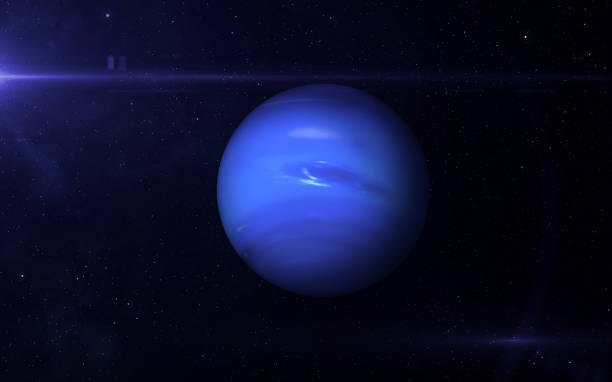Neptune, the eighth and farthest known planet from the Sun, is a captivating and enigmatic world that has intrigued astronomers since its discovery in 1846. As an ice giant, Neptune’s composition and atmospheric characteristics differ significantly from those of the inner planets, offering unique insights into the diversity of celestial bodies within our solar system. This article will explore the key features of Neptune, its atmosphere, weather patterns, and the ongoing research aimed at understanding this distant and mysterious planet.
Neptune: Characteristics and Features
Neptune is the fourth-largest planet in our solar system, with a diameter of approximately 49,244 kilometers (30,598 miles), making it about four times the size of Earth. The planet is composed mainly of hydrogen and helium, with traces of methane that give it its characteristic blue hue. Neptune also contains a higher proportion of heavier elements, such as water, ammonia, and methane ices, which led to its classification as an ice giant.
Neptune has a faint and fragmented ring system, first discovered in the 1980s, which is composed primarily of dust particles and small rocky fragments. The planet also has 14 known moons, the largest of which, Triton, was discovered shortly after Neptune itself. Triton is unique among the large moons in our solar system, as it orbits Neptune in a retrograde direction, suggesting that it was likely captured by the planet’s gravity and was once an independent object.
Neptune’s Atmosphere and Weather Patterns
Neptune’s atmosphere consists mainly of hydrogen, helium, and methane, with the latter responsible for the planet’s blue coloration. The atmosphere is divided into layers, with distinct cloud decks composed of various ices, such as water, ammonia, and methane. The upper layers of Neptune’s atmosphere experience powerful winds that can reach speeds of up to 2,100 kilometers per hour (1,304 miles per hour), making them the fastest in the solar system.
One of the most prominent weather features on Neptune is the Great Dark Spot, a massive, Earth-sized storm system observed by the Voyager 2 spacecraft in 1989. Subsequent observations by the Hubble Space Telescope revealed that this storm had disappeared, but new dark spots have since been detected, indicating that Neptune’s atmosphere is highly dynamic and ever-changing.
Exploring Neptune: Past and Future Missions
To date, only one spacecraft has visited Neptune: NASA’s Voyager 2, which conducted a flyby of the planet in 1989. The spacecraft provided the first close-up images of Neptune and its largest moon, Triton, revealing the planet’s dynamic atmosphere, ring system, and intriguing moon characteristics.
Future missions to explore Neptune and its moons have been proposed but are not yet confirmed. One such mission concept, the Neptune Odyssey, would send an orbiter and a probe to study the planet’s atmosphere, magnetosphere, and moons in greater detail, with a particular focus on Triton and its potential for harboring subsurface liquid water.
Is There Life On Neptune?
As far as we know, there is no life on Neptune. Neptune is a gas giant planet located in the outer region of the solar system, and it is not considered to be a habitable environment for life as we know it.
Neptune’s atmosphere is composed mainly of hydrogen, helium, and methane gas, with traces of other gases and elements. The planet’s atmosphere is extremely cold, with temperatures dropping to -360 degrees Fahrenheit (-218 degrees Celsius). The high pressure and the strong winds in the planet’s atmosphere also make it a hostile environment for life.
Moreover, Neptune’s distance from the Sun makes it receive only a tiny fraction of the amount of sunlight that Earth receives, which is essential for life as we know it to survive. Therefore, it is currently believed that Neptune is an inhospitable environment for life as we know it.
Mysterious Ice Giant Of Our Solar System
Neptune, the mysterious ice giant of our solar system, offers a captivating glimpse into the complex and diverse array of worlds that populate our cosmic neighborhood. Its dynamic atmosphere, intriguing moon system, and enigmatic composition provide fertile ground for ongoing research and exploration. As we continue to study Neptune and strive to unlock its many mysteries, we deepen our understanding of the processes that shape our solar system and the incredible variety of celestial bodies that reside within it.
Explore Neptune and learn more about our planets at NASA.gov










